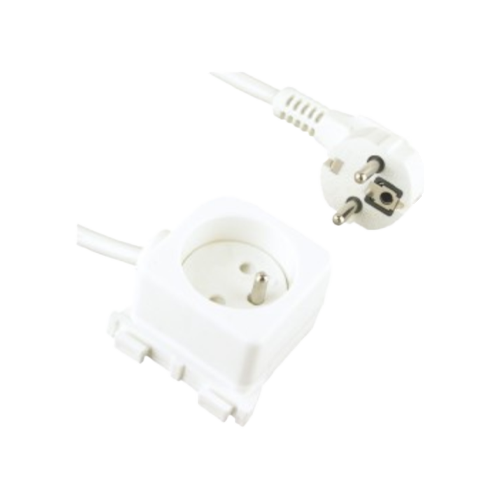When choosing an extension cable for indoor or outdoor use, several factors should be considered to ensure safety and effectiveness:
Weather Resistance: Outdoor Use: Extension cables used outdoors must withstand various weather conditions such as rain, sunlight, and temperature fluctuations. Look for cables specifically labeled as weatherproof, outdoor-rated, or suitable for wet locations. These cables typically feature a robust jacket made from materials like rubber or vinyl, which offer better resistance to moisture and UV degradation compared to indoor cables typically made of PVC.
Jacket Material: Outdoor Cables: The jacket material of outdoor extension cables is crucial for durability and longevity. Rubber and vinyl jackets provide excellent protection against abrasion, chemicals, and environmental elements. They also remain flexible in cold weather conditions, which is important for outdoor use. Indoor cables often use PVC jackets, which are suitable for dry, indoor environments but may not offer adequate protection against outdoor elements.
Length: Choose the length of the extension cable based on the distance between the power source and the intended outdoor location. Avoid excessive lengths to minimize voltage drop, especially for higher power devices. Longer cables should have a larger wire gauge (lower gauge number) to maintain voltage integrity over longer distances.
Gauge (Wire Thickness): Outdoor Considerations: The wire gauge determines the amount of current the cable can safely carry over its length. Thicker wires (lower gauge numbers) have lower electrical resistance and are suitable for longer distances or higher power applications. For outdoor use, select a cable with a lower gauge number to ensure minimal voltage drop, which is critical for maintaining safe and efficient power delivery over extended distances.
Grounded Plugs: Safety Requirement: Outdoor extension cables should have grounded plugs (three-pronged) to provide an additional level of safety. The grounding conductor protects against electrical faults by directing potentially dangerous currents safely to the ground instead of through connected devices or individuals.
Power Rating (Amperage and Voltage): Matching Device Requirements: Ensure that the extension cable is rated for the maximum current (amperage) and voltage of the devices you intend to use. Overloading an extension cable can lead to overheating, melting of insulation, or even fire hazards. Outdoor cables should be rated for higher amperage and voltage capacities to accommodate outdoor power tools and appliances safely.
Usage Environment: Environmental Factors: Consider the specific environmental conditions where the extension cable will be used. Outdoor cables must withstand exposure to sunlight, rain, snow, and temperature variations without degradation or safety compromise. Proper insulation and jacketing materials are essential to protect against moisture ingress and UV damage.
JT2001 European standard power cord



 English
English عربى
عربى











